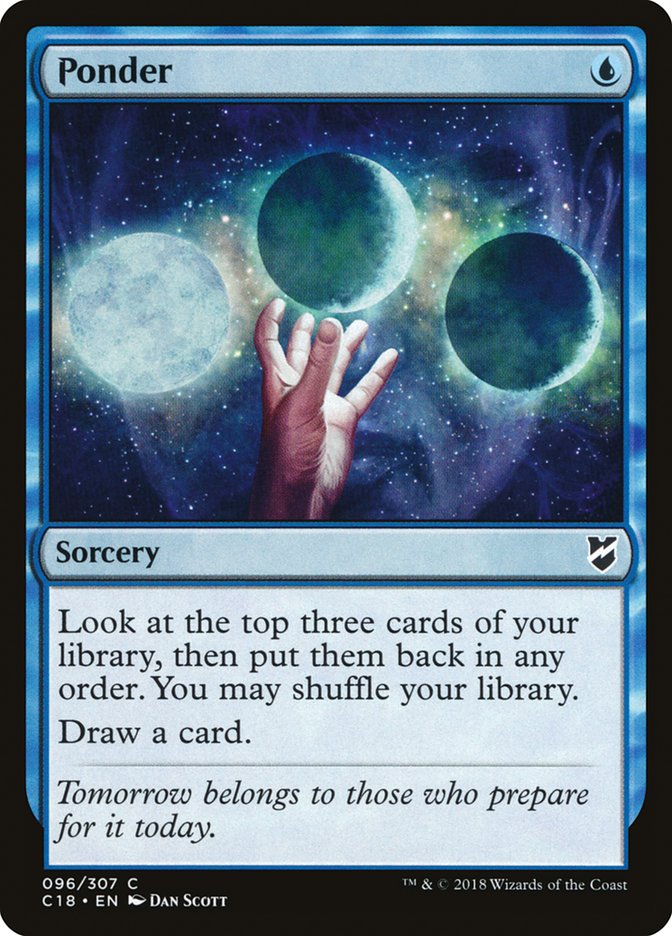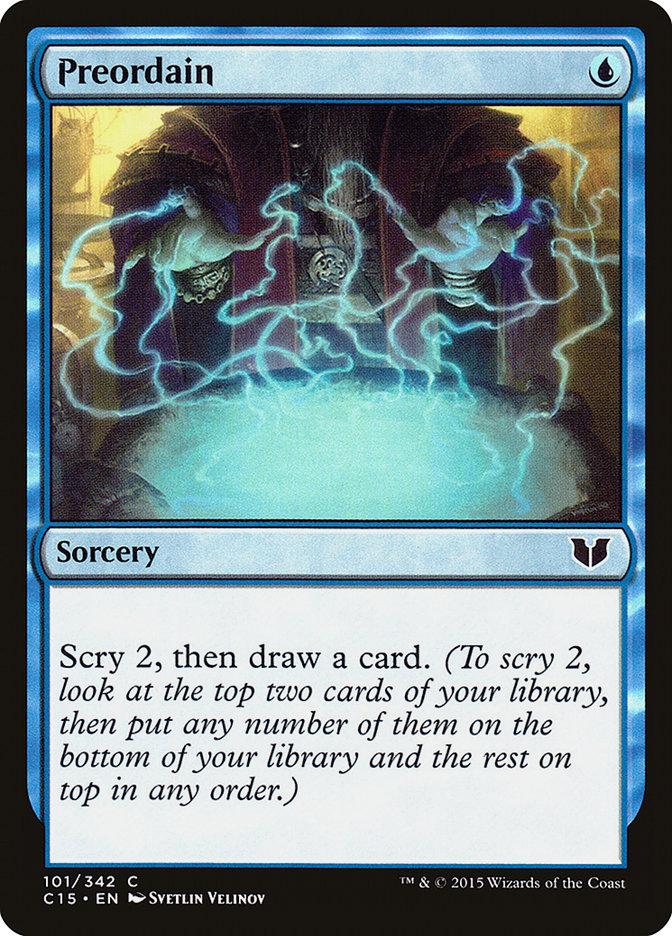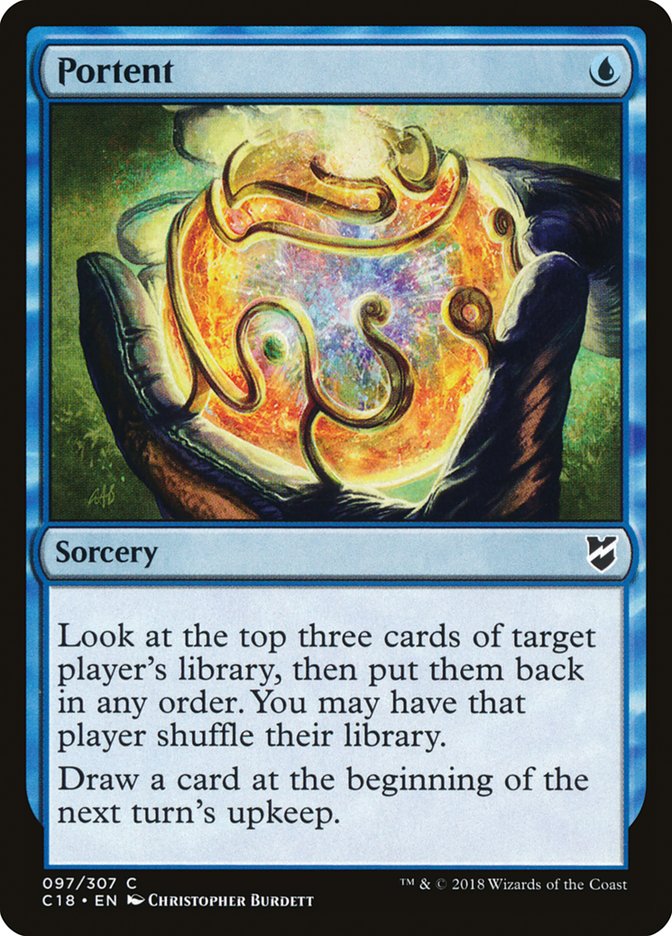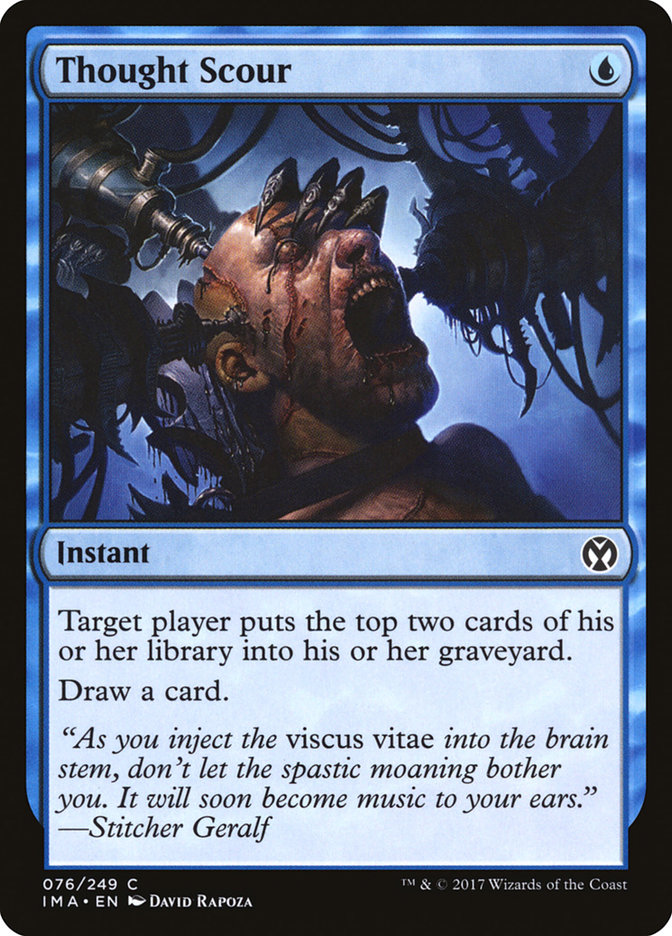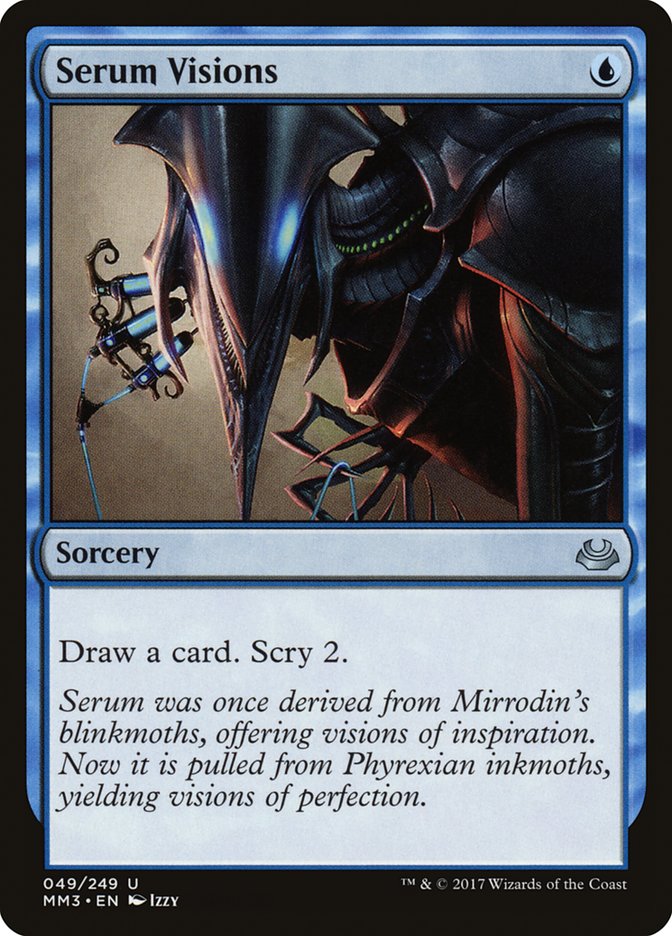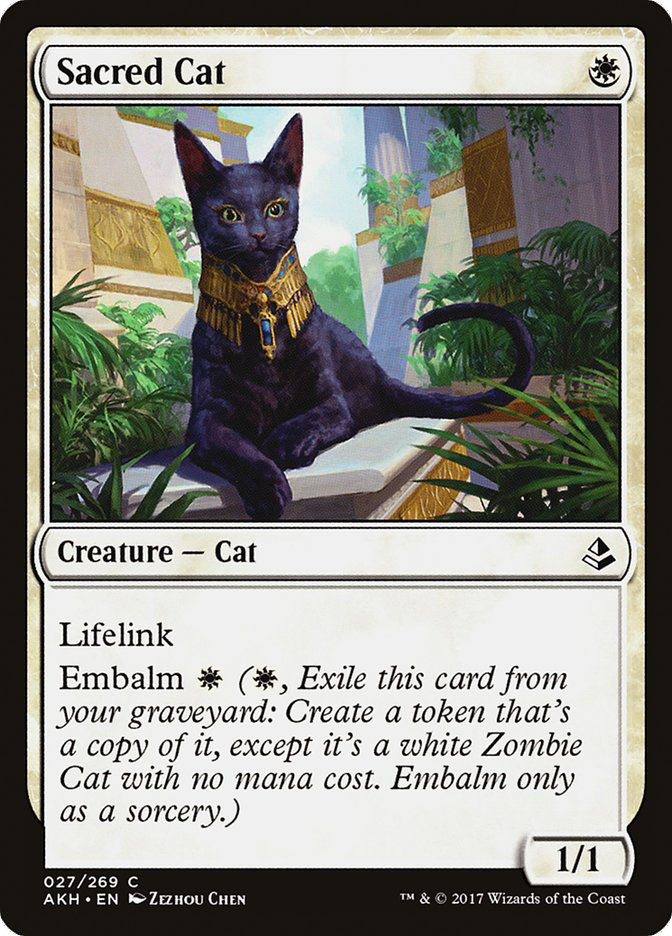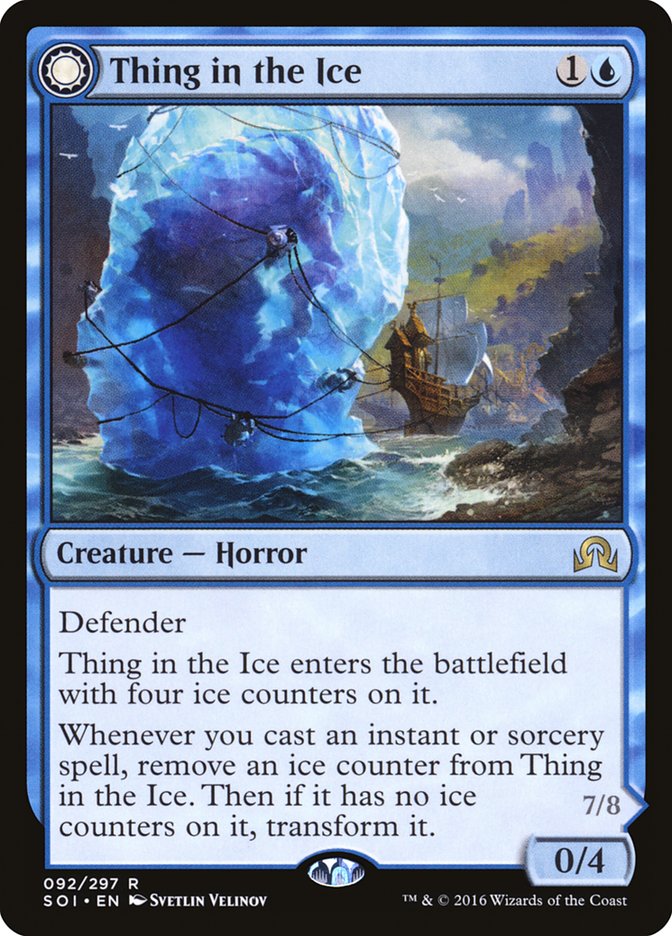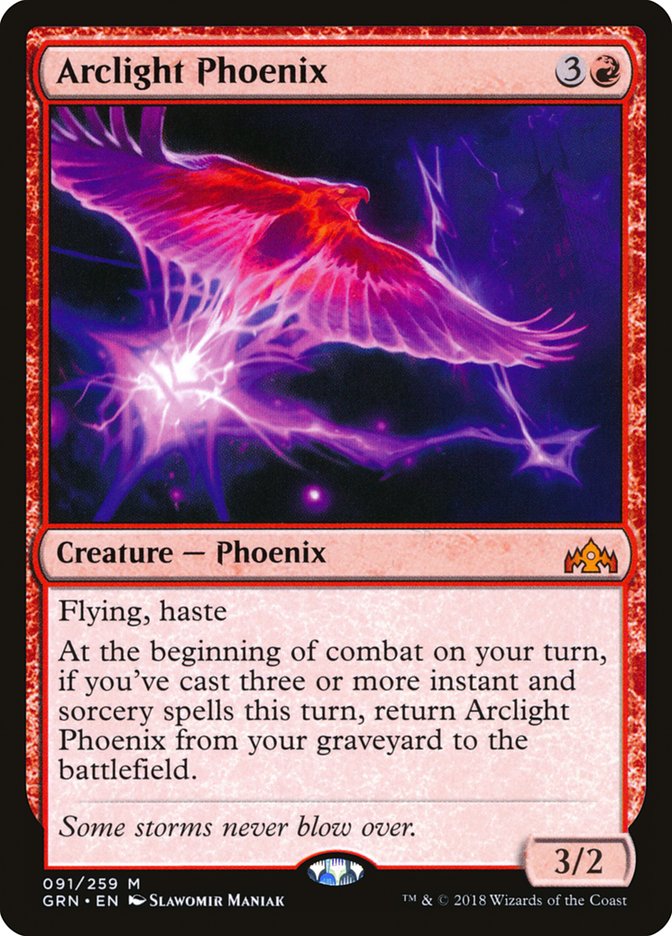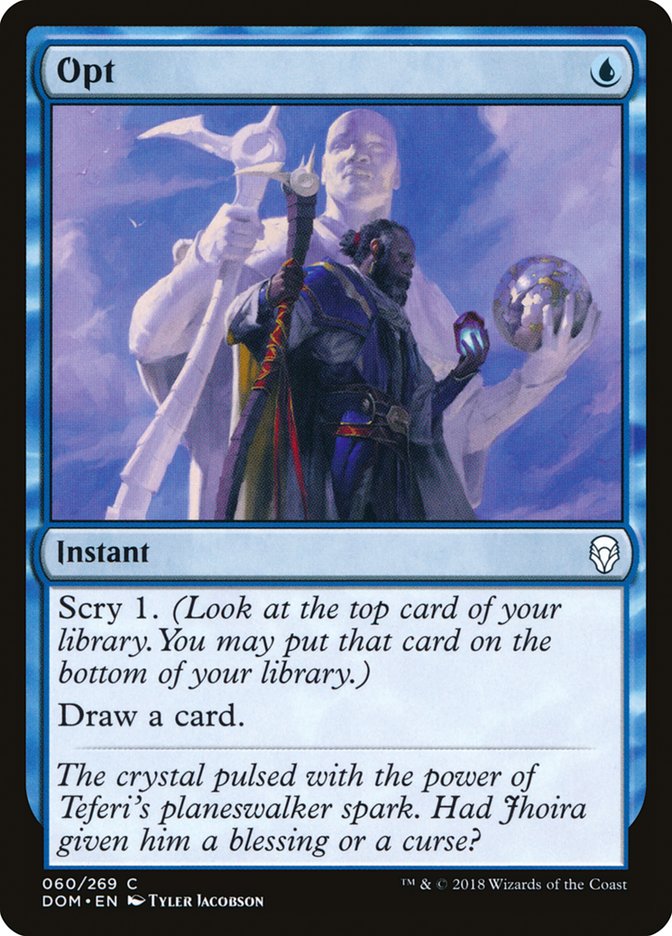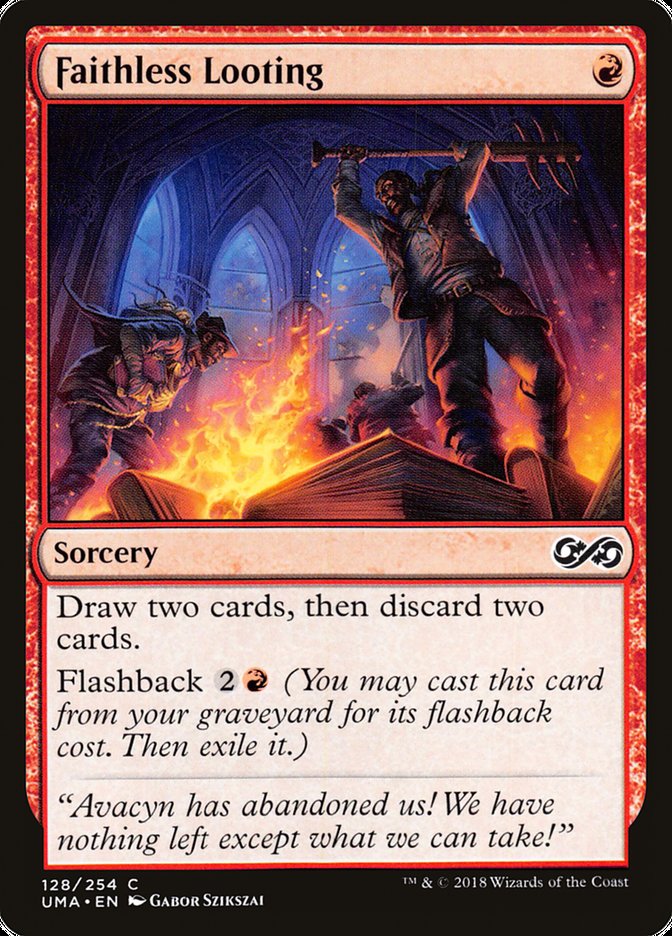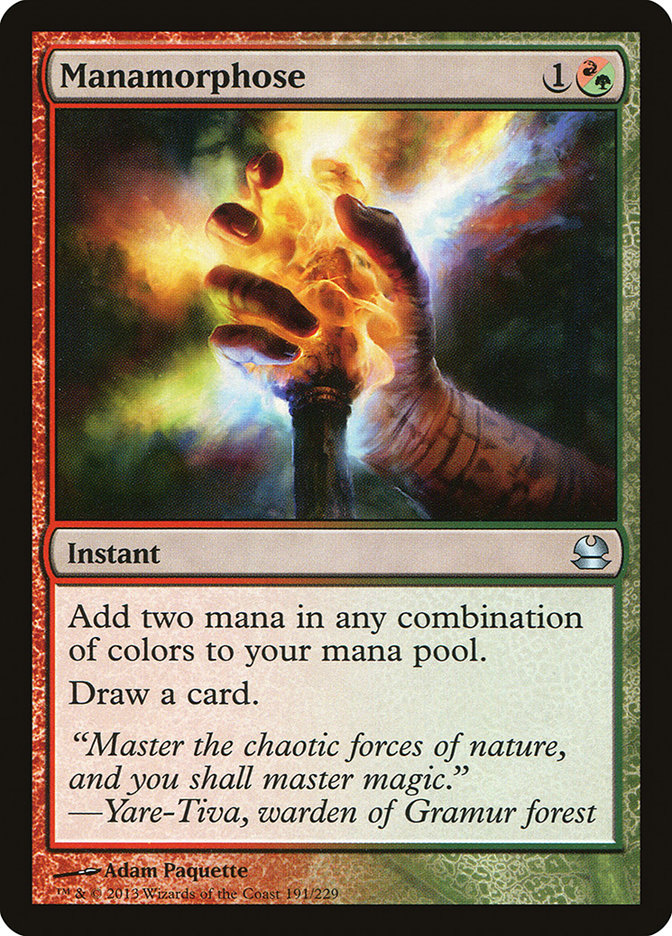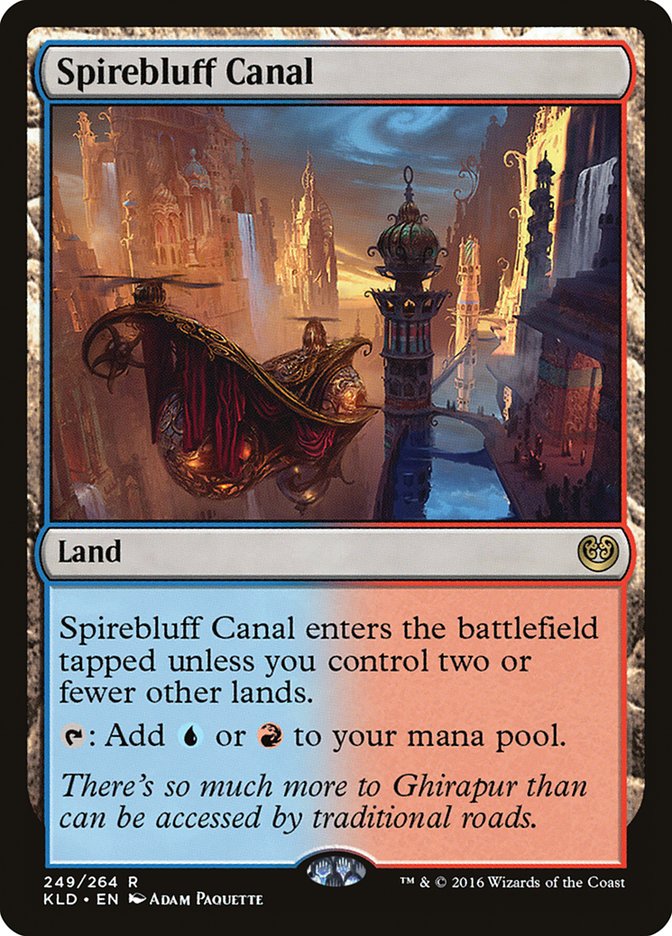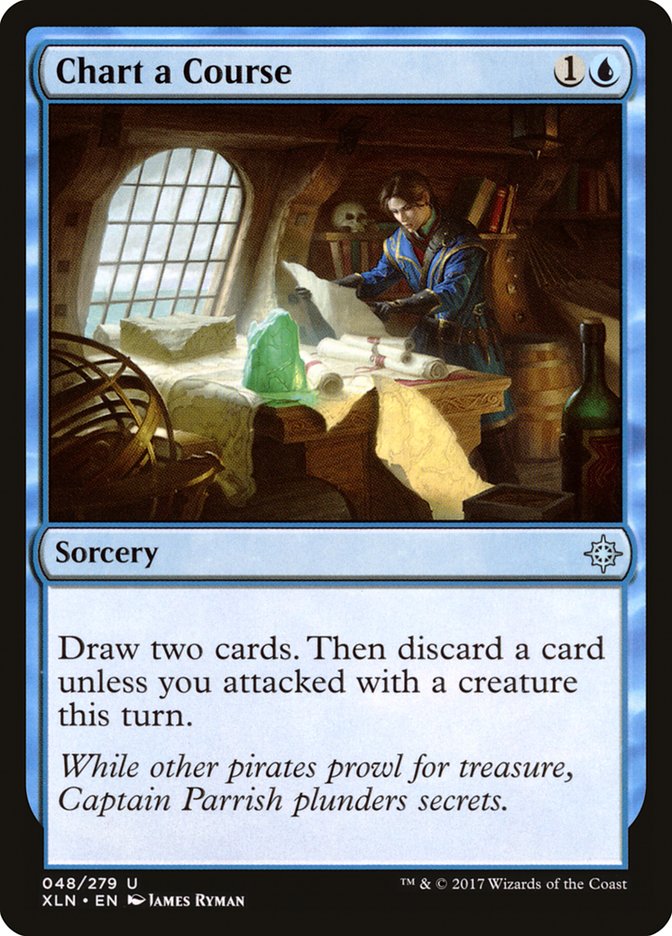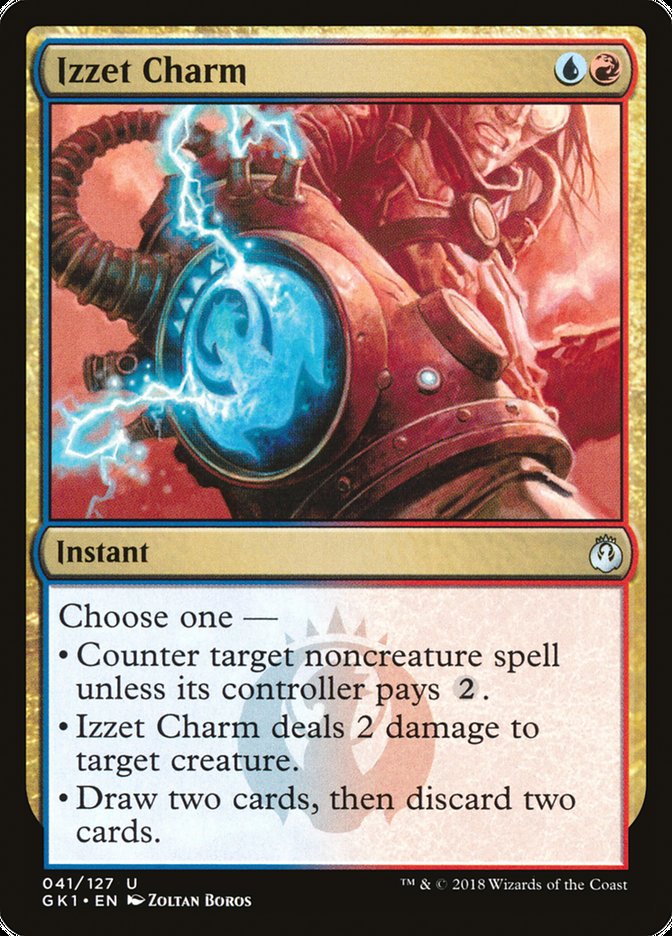Part of what makes playing Legacy so intricate is the subtle difficulty of
maximizing the value of your cantrips. Brainstorm, Ponder, Preordain, and
Portent all see play in the format and all do similar things, but those
that recognize their differences and how those differences impact gameplay
gain a small but significant advantage that compounds over the course of a
game, match, and tournament.
Decks with a high density of cantrips and other velocity-granting effects
are able to play preposterously low land counts for their curve, a
principle first put into practice by Alan Comer and his
Turbo Xerox
deck over twenty years ago. Additionally, the increased consistency that’s
granted by seeing more cards than the opponent in an average game gives
these decks a lower fail rate. And finally, they’re able to diversify their
cards, both threats and answers, and play more narrowly powerful effects
(especially in the sideboard) and still find these cards consistently even
when played in low numbers.
But these advantages can only be realized if the pilot leverages their card
selection spells and other cantrips effectively. Every mistimed Ponder or
Serum Visions might mean you miss seeing the extra card or two that could
make the difference in a game.
Having played Storm in Legacy for a long time, I recognize the value in
sequencing card selection appropriately, but never have I played a deck
where it was so nuanced and important as it is in the list I took to a
first-place finish last weekend at the StarCityGames.com Open in Baltimore:
Creatures (13)
Lands (18)
Spells (29)

This list has twenty spells in the maindeck that can dig for more cards,
and four of them come back from the graveyard for a second go. Among
commonly played Modern decks, only Storm rivals it in terms of velocity and
card selection. But in a format as fast as Modern, you can only spin your
wheels with cantrips for so long before you fall too far behind to catch
up. This deck is also trying to find and recur Arclight Phoenix or
transform Thing in the Ice as quickly as possible – ideally on the first
three turns of the game, so utilizing these cantrips to their utmost is
essential to realizing the deck’s full potential.
For a more basic rundown of the deck, look to my
article from two weeks ago
. Today I’m going to focus on how to play each of the deck’s cantrips so
you can be prepared for the Season Two Invitational this weekend. First
some general notes:
The Blue Cantrips
Thought Scour is the most straightforward of the deck’s cantrips, and
that’s because there isn’t much of a decision to be made. You’re going to
target yourself over 90 percent of the time and that means you’re going to
be drawing the third card down. Sometimes you’ll target them to clear a
card they scryed to the top with Serum Visions or another similar effect,
and sometimes your library is so low you can’t afford to mill the two
cards, but these are corner case scenarios, and it’s important to note that
one of the common corner cases -Thought Scouring the opponent when there’s
a Rest in Peace on the battlefield isn’t so obvious when you have Crackling
Drake in your deck–so let’s just assume you’re targeting yourself.
Under that assumption, because the result of Thought Scour is
deterministic, it’s best utilized as the first cantrip in a chain. Knowing
you have an extra Arclight Phoenix or Faithless Looting in the graveyard
and seeing a new card is extra information you can gain before making
important scry decisions off of Opt or Serum Visions or what to discard to
a Faithless Looting.
What this comes down to is the principle of optionality. Thought Scour is
the card selection spell with the fewest options, and it’s better to save
your options for as long as possible, ergo Thought Scour is the spell you
cast first.
However, this heuristic is only to be used when you’re chaining cantrips
together. On the opening turns of the game, the cantrips are to be used to
set up for explosive turns 3 and 4, and Thought Scour’s lack of optionality
makes it worse in that regard than Opt and Serum Visions.
mean you miss seeing the extra card or two that could make the difference
in a game.
When deciding between which cantrips to cast on a setup turn, the critical
question to ask is how certain you are of the following turns. Phrased
differently, how likely is new information to change your current line of
play?
For example: Your general goal is to cast and transform Thing in the Ice or
recur as many Arclight Phoenixes as possible by turn 3. If your hand
already has the capability to do so, then feel free to cast Thought Scour
and go from there. If your hand needs more help than that, then casting
Serum Visions or Opt in order to see more cards is likely the better
option.
Of course, evaluating your hand is going to change based on the context of
the matchup. Finding key pieces of interaction against linear decks should
be prioritized, as should finding protection for your threats against
control. The rules here aren’t rigid, and getting used to the nuances of
specific situations will take practice, but as with all things in Magic,
it’s critical to formulate and execute a specific plan.
That said, you can’t have a specific plan if your hand is all cantrips,
which is a frequent occurrence with this deck. In this case, and any other
where you don’t have the tools to devise a specific plan, you’ll have to
dig hard in order to quickly find the necessary tools. Serum Visions, which
sees three cards to Opt’s two and Thought Scour’s one, is the clear star in
this role, and is thus the most frequent cantrip to cast on turn 1 – par
for the course in Modern.
In fact, at any point in the game, if you’re not planning on casting the
cards you draw into that turn (aka you’re setting up for a later turn),
sequencing Serum Visions last is likely correct. Don’t be afraid to main
phase an Opt or Thought Scour followed by Serum Visions unless you need to
leave open the mana for something else – the extra cards you see will
inform your scry decision and maximize your chances of setting up an
explosive turn. One of the worst things you can do with this deck (and any
other, for that matter) is waste time drawing into cards you’ve already
seen with Serum Visions.
Also, in Izzet Phoenix, one of the best things you can do is cantrip into
cards you’ve already seen with Serum Visions.
”
Ross…it can’t be the best and worst at the same time. That’s now how
those words work.”
Patience, young padawan. All will become clear in due time.
Consider the case when we’re on our cantrip chain turn. It’s now or never
to return Arclight Phoenix or transform Thing in the Ice, and we don’t have
the necessary spells to do it in hand. This is a perfect time to cast Serum
Visions first, find an extra spell or two, and then Opt or Thought Scour
(targeting your opponent!) to draw the next card. Serum Visions is still
serving as a set up spell, but it’s setting you up for later that turn
instead of for a following turn.
This sequencing is particularly important when on an Arclight Phoenix turn,
since finding a second copy for your Faithless Looting is immeasurably
better than discarding one. One of my most common lines is to cantrip on
turn 1, then cast Manamorphose into Serum Visions in to Faithless Looting.
Sometimes you miss, but such is life. All you can ask for is that you give
yourself the best chance possible.
and when to lead with it is very important to optimizing your play
patterns
This deck goes for the latter earlier and more often than any I’ve ever
seen.
The last of this group, Opt, is unique in that it’s the only one of the
trifecta that lets you choose its replacement among multiple cards. Thought
Scour digs deeper in a sense, but that’s only for cards that are relevant
in the graveyard (or Crackling Drake) so when you’re looking for that
lethal Lightning Bolt or key counterspell and you only have one shot at it,
Opt is the best of the three. As a result, I try to save my Opts as much as
possible so I know exactly what I’m looking to draw and what I’m looking to
send to the bottom of my library.
That doesn’t mean I’m holding back a turn 1 Opt and instead making no play,
but I’m always going to cast Thought Scour or Serum Visions over it when I
know I’m not casting anymore card selection spells that turn.
As for Opt versus Sleight of Hand, while the latter gives you all the
information up front, I’ve found that being an instant is surprisingly
relevant, both for leaving up mana for an interactive spell and for being
able to transform Thing in the Ice on your opponent’s turn or in response
to removal. The addition of Monastery Swiftspear makes instants even
stronger by making combat more difficult for your opponent.
Faithless Looting
Now we move on to the non-blue card selection spells, the two best cards in
the deck. Faithless Looting is on the short list of cards facing a
potential ban, and it’s incredibly important here as the best enabler for
Arclight Phoenix.
Faithless Looting doesn’t function like the cantrips. It’s very important
to have cards you want to discard before casting it, much like it’s
important to have cards you want to put on top of your library with
Brainstorm. Because of that, you’ll want to exercise the utmost patience
before casting a Looting. Every turn brings another draw towards Arclight
Phoenix and another chance to cantrip into them, and there’s little reason
to blow it early since early in the game it leaves you with fewer resources
anyway.
Faithless Looting is the only card selection spell in the deck I will waste
mana to keep in my hand. Once you have a Phoenix or extra lands/dead cards
to throw away than feel free to turn them into something better, but
otherwise you should only cast Faithless Looting if you’re desperate for a
land drop or key piece of interaction.
It’s always the last card in my chain on an Arclight Phoenix turn if
possible, so as to maximize the number of looks at an extra Phoenix, though
if you have two already (lucky lucky) you can cast the Looting earlier and
maybe set up a triple Phoenix turn. This is known in the business as…the
nuts.
want to put on top of your library with Brainstorm. Because of that, you’ll
want to exercise the utmost patience before casting a Looting.
You have a little more leeway with the Flashback half on Faithless Looting
because three mana is such a steep cost. I’m often willing to cast it
regardless of my hand’s complexion after a Thing in the Ice on five mana,
for example, since it’s the best way to set up a transformation on the
following turn. But that’s only if I’m under sufficient pressure to
transform or have the opportunity to close the game out with the seven
damage.
One final note on Faithless Looting. When you have a Thing in the Ice and
Arclight Phoenix (or two) on the battlefield, casting the Faithless Looting
to remove the last counter from Thing (or after it transforms) is best,
since you can immediately discard the Phoenix(es) that were returned to
your hand and recur them. This can lead to turns where you win the game out
of nowhere, dealing ten or thirteen damage against an empty battlefield.
Manamorphose
Ah, Manamorphose. Prices don’t get better than free, and even for the
price, Manamorphose is a great deal. Casting a string of one-mana spells is
very color intensive, and while you can take a ton of damage from your
lands to find multiple copies of Steam Vents, that’s a significant
liability against aggro strategies. On the other hand, if you fetch basics,
you may be left with more spells of a certain color than you have mana for,
and thus unable to maximize your mana. Or worse yet, unable to recur
Arclight Phoenix/transform Thing in the Ice.
Manamorphose solves that issue, letting you be more conservative with your
lands and still cast your spells. So the trick is obviously figuring out
what colors to add. This comes up when you’re short on spells and don’t
know if you’ll be drawing blue or red spells off the top. If you have the
option to hold off on the Manamorphose in one of these cases then do so,
especially if you’re casting a Serum Visions, which should set up your next
draw.
If you’re too tight on mana for that, it’s a bit of a guessing game. You
can weigh the remaining spells in your deck and go off of that, though I
tend to lead towards making blue mana since the blue spells chain together
more readily than the red. If you’re going for a Phoenix discard, you’ll
need to leave one red available for Faithless Looting, and against an
aggressive deck it may be valuable to leave open more red and try to hit
some removal. This is a situation where you’re going to get burned for
making the right play some portion of the time and all you can do is try to
be objective about it and move on.
Spirebluff Canal
“Ross, this isn’t a cantrip. It’s a land. Are you sure you’re feeling okay?”
Yes, Spirebluff Canal is a land.
Thank you for supporting me on SCG Premium.
But! It’s a land that influences how you sequence your spells in this deck.
When you spend a lot of mana on cantrips, you will fall behind if you don’t
back them up with powerful effects. The powerful effects in this deck also
require you to cast a chain of spells in one turn. It follows that having
lands that enter the battlefield tapped are particularly harmful to this
deck’s functionality.
Playing Spirebluff Canal on turn 4 prevents you from casting Crackling
Drake or Thing in the Ice with a realistic threat to transform it
immediately or even a hardcast Arclight Phoenix. Every mana counts here, so
on turn three, if your plan is to cantrip further, you should try to hold
back your land drop if possible. Sequences like Thing in the Ice + Serum
Visions don’t allow for this because you’d rather get the trigger, but a
turn of three cantrips to return Arclight Phoenix may yield a Spirebluff
Canal that you’d rather play on turn 3 than whatever and was in your hand
to start. Better yet, finding that dual could allow you to freely fetch a
basic rather than a Steam Vents to solidify your colors.
The Singletons
There’s not much to say about these two. They’re the weakest cards in the
deck, but a necessary evil since you need discard outlets for Arclight
Phoenix. I went with a split with the reasoning that diversification is
good when you have a lot of velocity.
Since they’re both discard outlets like Faithless Looting, I try to hold on
to them when possible, though being two mana makes them less valuable when
chaining. I’m more liberal with Chart a Course because it’s not card
disadvantage to cast, while Izzet Charm being modal makes it more valuable
to hold since you never know if/when the Spell Pierce or Shivan Fire modes
will come up.
With all the cantrip power in Izzet Phoenix, it often feels more like
playing Legacy than Modern. It’s remarkable how consistent the deck is,
rarely taking mulligans and nearly always finding something powerful to do
by the third turn of the game. As much as I think the criticism of Modern
being a non-interactive format where both players flip over their top ten
cards to determine the winner of a given game is overblown, having a deck
with the power to compete against the top draws from other archetypes while
rarely giving away free games is a comforting place to be. And it’s the
power of cantrips that make it that way.



